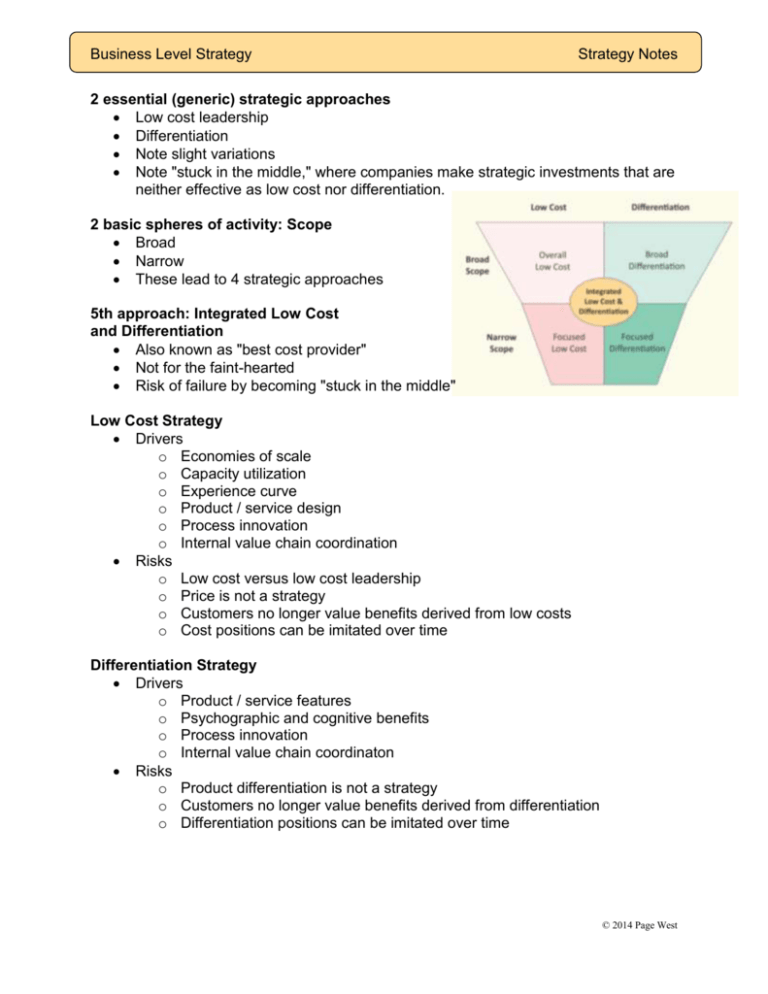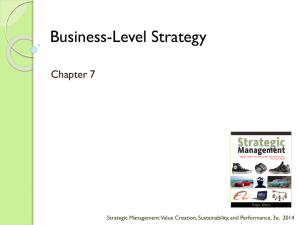Notes 07 - Business Level Strategy
advertisement

Business Level Strategy Strategy Notes 2 essential (generic) strategic approaches Low cost leadership Differentiation Note slight variations Note "stuck in the middle," where companies make strategic investments that are neither effective as low cost nor differentiation. 2 basic spheres of activity: Scope Broad Narrow These lead to 4 strategic approaches 5th approach: Integrated Low Cost and Differentiation Also known as "best cost provider" Not for the faint-hearted Risk of failure by becoming "stuck in the middle" Low Cost Strategy Drivers o Economies of scale o Capacity utilization o Experience curve o Product / service design o Process innovation o Internal value chain coordination Risks o Low cost versus low cost leadership o Price is not a strategy o Customers no longer value benefits derived from low costs o Cost positions can be imitated over time Differentiation Strategy Drivers o Product / service features o Psychographic and cognitive benefits o Process innovation o Internal value chain coordinaton Risks o Product differentiation is not a strategy o Customers no longer value benefits derived from differentiation o Differentiation positions can be imitated over time © 2014 Page West Important questions about business level strategy 1. Why does the successful pursuit of each create competitive advantage? Recall that competitive advantage = superior profitability (over the long run). Each approach can deliver superior profitability in the short run. Each depends on important caveats Maintaining parity conditions Evolution of customer expectations is accounted for Evolution of competitive conditions is accounted for 2. How does a company successfully pursue a type of business level strategy? Value chain investments – every cell Understand executional & structural cost drivers Consistency and coordination across value chain cells. Working upstream with suppliers & downstream with customers. Be able to diagram a value chain that uniquely reflects a company's strategy. 3. When is each type of strategic approach appropriate? Examining the stage of industry development provides guidance. 4. What are the risks associated with pursuit of each type of business level strategy? Review discussion for low cost leadership. Review discussion for differentiation. Review discussion for integrated approach. Outsourcing When is it appropriate? To enhance strategic position in the marketplace. To offload non-strategic activities that require time and resources and for which there is no special competence. Risks in outsourcing Loss of control over costs or differentiation values Disruption of coordination and linkages in internal value chain Hollowing out the core – the cumulative effect of a series of outsourcing moves Competitive learning





